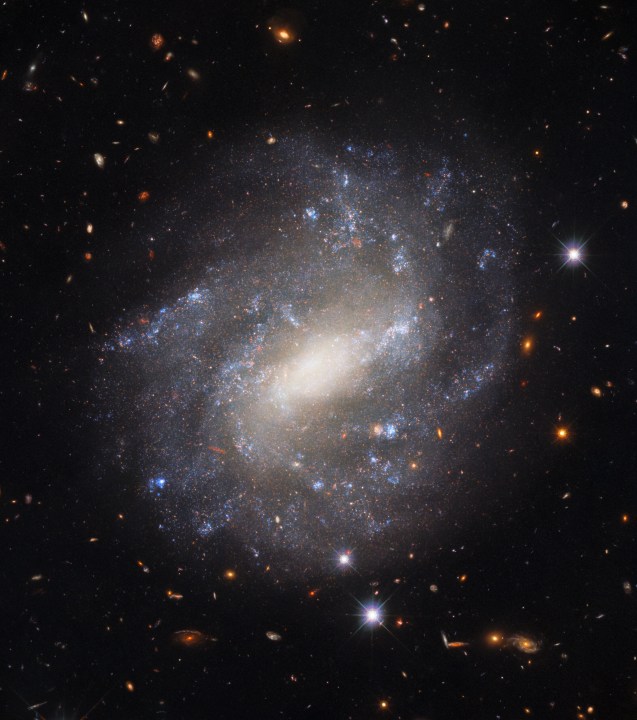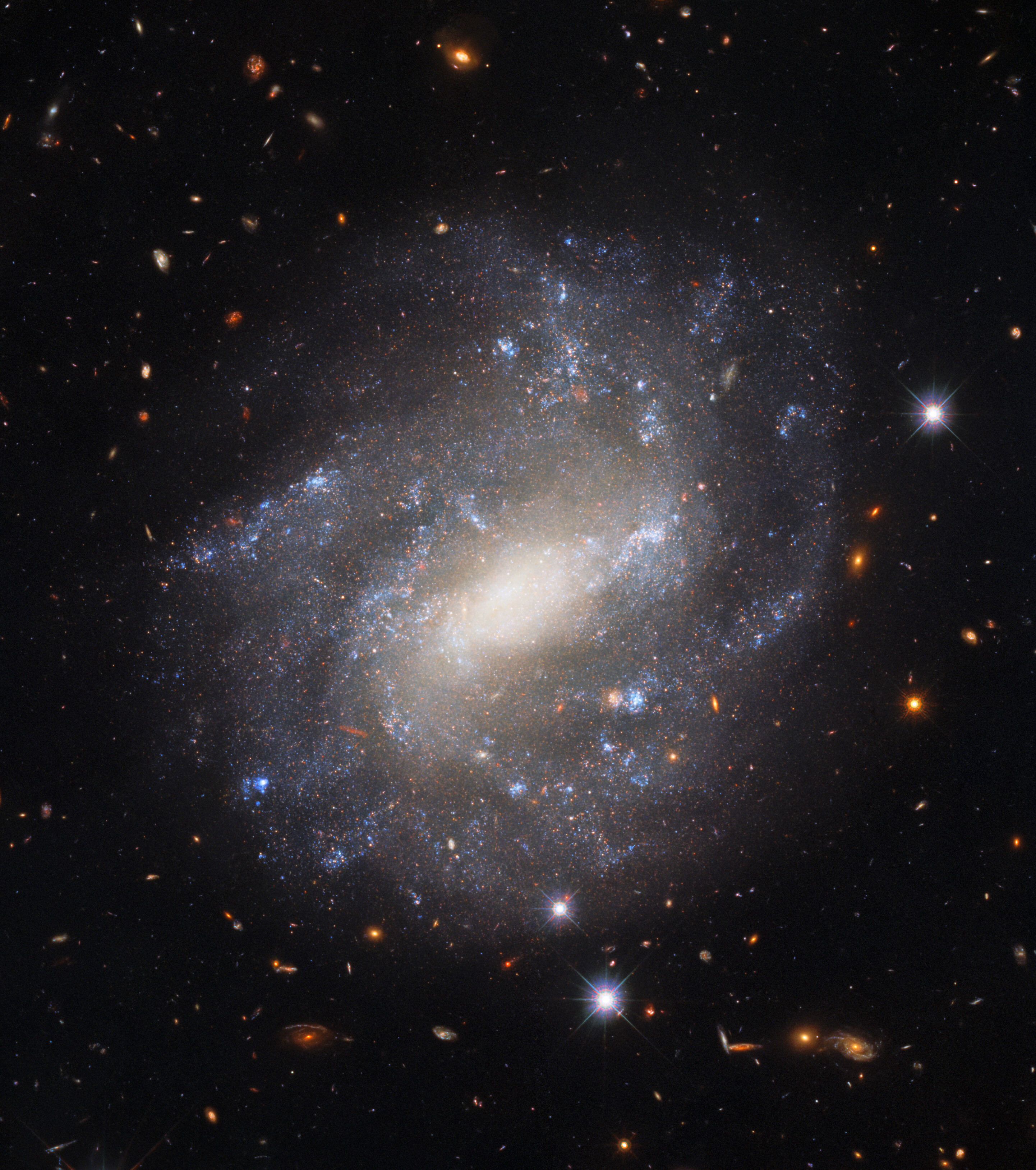Attempting to measure the scale of the universe isn’t any simple activity. We all know that the universe is increasing, although the precise charge of this enlargement will not be but mounted. So one methodology that astronomers use to inform how far-off very distant objects are is known as the cosmic distance ladder. The concept is that completely different objects can be utilized as rungs on a ladder for measuring completely different distances, from wanting on the actions of stars to observing pulsating stars referred to as cepheid variables to observing a kind of supernova referred to as a Kind Ia.
Every of those lessons of objects is beneficial for figuring out more and more giant distances, however they should be calibrated to one another to be correct. Cepheid variables change in brightness over time, and importantly, the pace of the modifications in brightness is correlated to their true brightness (versus how brilliant they seem within the sky). So after we see a star pulsing we will work out its true brightness, and by evaluating this to its obvious brightness, we will work out how far-off it’s.

For much more distant objects, we will use Kind Ia supernovae as yardsticks, as a result of these explosions at all times have roughly the identical stage of brightness — so as soon as once more, we will evaluate the obvious brightness to the true brightness to work out how far-off they’re. However, to measure distance precisely, we’d like a strategy to test that distances calculated based mostly on cepheids are calibrated to distances based mostly on supernovae.
That’s the place galaxies like UGC 9391 are available, which each incorporates cepheid variable stars and not too long ago hosted a Kind Ia supernova. This week’s picture from the Hubble Area Telescope exhibits this helpful distance-measuring device in all its glory.
“UGC 9391 helped astronomers enhance their distance estimates by offering a pure laboratory wherein to match two measuring strategies – supernova explosions and Cepheid variables,” Hubble scientists defined. “Bettering the precision of distance measurements helps astronomers quantify how rapidly the universe is increasing – one among Hubble’s key science targets.”
Editors’ Suggestions
